If you were to create a list of startups that had so-called “overnight success,” personal finance software service Mint would have to be near the top of the list. Winning TechCrunch 40 helped Mint get off to a great start and establish its credibility, but, in the end, that likely was a small contributor to its overall success. What propelled Mint to millions of users was a strong product and a strong marketing strategy.
Mint officially launched in September 2007. In November 2009, Intuit bought Mint for $170 million. At the time, Mint had over 1 million users and was adding a few thousand new users every day. Four years later, Mint has over 10 million users.
Growing to millions of users in two years would be a success story for any consumer web company. When you add in the fact that this is a finance product with no real viral component (Mint is personal, not social), it makes it even more impressive. People had to hand over their financial data to a young company, so Mint had an uphill climb in gaining trust with users. As we’ll see, being a consumer financial startup was a big turn off for investors, too.
This blog post is, in part, inspired by Jason Putorti’s (designer extraordinaire at Mint) answer on Quora about the different components that led to growth. Putorti provides a synopsis of each component. I set out to dig a little deeper and get a more thorough understanding of how Mint grew. Here’s what I found:
Different from the Start
Many companies like to launch their product and iterate based on feedback. Mint founder, Aaron Patzer, took a different approach:
“When I started Mint I took a very different approach…and this is sort of the methodology that I formed (Validate your idea > Create a prototype > Build the right team > Raise funding).
“Number one is to validate your idea. I actually didn’t write a line of code until I did about three or four months’ worth of thinking on Mint, which I think is counter to what a lot of people will suggest. A lot of people will say ‘Just get the product out there, just iterate very, very quickly, (and) just make a prototype.’ That works for certain types of things; I think anything that is social…that works. But for finance I wanted to be a little more rigorous and there were a lot of technical problems, connectivity to all of the banks, and the business model.
“The next thing was to create a prototype, then to build the right team, and then to raise funding.”
Contrary to some entrepreneurs, Patzer told everyone he knew about his idea for Mint. He said that out of the roughly ninety people he told, only one said they would use it.
Ideas don’t really matter, what matters is execution, he says. “Ideas are really nothing, it’s all in the execution of that idea. Either you have a fantastic idea and you’re one of the only people in the world who can do it, or you have a fantastic idea and you have to be the best executor on that idea.”
When Patzer had the idea for Mint, he formed a few messaging concepts to describe it. One said something like “Mint is your Money Ninja.” Another said “Mint is your Money Champion,” and another said “Mint is Free Personal Money Management Software.” These were all written out on a page which explained the idea for Mint and what it did.
Patzer then went to a train station, stopped people, handed them the concept, and asked them questions like “Does this sound like something you would use?” Patzer suspected that people probably would say “yes” more often than they actually would use it, so he would have to gauge their enthusiasm in their “yes” answer. If they were enthusiastic and genuine about their answer, Patzer would weigh that more heavily than if someone monotonically said “yes.”
Another question he asked was about security. “Does this sound like something that is secure?” He didn’t ask if they would give them his financial information, but rather asked if it seemed like a trustworthy service.
A big plus for people? Reading the words “Bank Level Data Security” made a lot more people say they would use it.
An early Mint homepage design made their bank level security clear:
To this day, the words are highlighted on their security page:
This is all part of validating your idea, according to Patzer. It’s how you put together your marketing messages. It’s free, similar to a/b testing, and you should do it before you build your website.
Security was a big hurdle, not just for consumers, but also for investors. Patzer says that 50 venture capitalists turned him down before he got his first “yes.” The number one reason? The VCs didn’t think people would trust a startup with their financial and other private information. By the way, after every rejection from a VC, he’d listen to this Frank Sinatra song.
Superior Product
“That was the idea behind mint. Make it dead simple to get your finances in order and to feel in control of your life.” – Aaron Patzer
Mint was not the first web-based money manager software (another strike to the first-mover advantage theory). There were a few heavyweights already occupying the market – Quicken Online, Microsoft Money Online, Wesabe, Geezeo, and others.
So how do you compete in a crowded market?
By having a superior product. The best defense is a good offense, and Mint was able to put their competitors on their heels. It’s what you hear a lot of business people preach. Rule #1 is making something people want, and rule #2 is capitalizing on your competitors’ weaknesses.
Let’s get a little deeper into this.
The incumbents in the market had a few weaknesses. For one thing, it was difficult to set up an account. Some had very tedious tasks for setting up and connecting accounts, and, in the end, it would take an hour for an account to be ready.
Mint focused on making it easy to get set up and have the program running in 10 minutes.
Another area of weakness was that many users had uncategorized expenses. They’d use Microsoft Money or Quicken and look at their spending graphs, and at least 50% of their expenses fell under “Uncategorized.” Users would have to manually categorize them, which could take hours every week. Not too useful. Patzer worked on an algorithm that would automatically categorize expenses. He explains it in detail in this video.
Mint also had what Patzer called a “gem.” This gem was the goal planning part of Mint.
“Within this idea (for Mint) was a little gem, a little nugget. (It was) the money component of the life planning software, of the goal planning software. It resonated; people were having trouble figuring out ‘How much do I need for retirement? How much is something going to cost? How do I save up more?’ And I realized that virtually everybody I talked to had this problem and virtually everybody I talked to hated Quicken and Microsoft Money, the dominant products at the time.”
Content Marketing
According to Patzer, the marketing plan was “Whatever we can do, basically, for cheap or for free.”
A big area that Patzer and his team turned to was content marketing. They started a personal finance blog and began building an audience for Mint.
Jason Putorti says “We focused on building out a unique personal finance blog, very content-rich, that spoke to a young professional crowd that we felt was being neglected. Eventually the blog became #1 in personal finance, and drove traffic to the app. Our app didn’t have a high viral coefficient but we had content that was. Our infographics and popular articles became regular hits on Digg, Reddit, etc.”
The blog featured various topics on finance. It had “Trainwreck Tuesday” which featured disasters in personal finance. Readers could even submit their own. They had a “What’s in your Wallet” feature where they’d interview various people (technology CEOs, finance people, etc.) and ask them questions (for example – what card do you use, what brokerage accounts do you have, etc.).
Each Mint team had their own feature on the blog where they’d discuss their finances. A few team member entries:
- Aaron Patzer (Founder and CEO)
- David Michaels (VP of Engineering)
- Jason Putorti (Lead Designer)
- Poornima Vijayashanker (Software Engineer)
- Matt Snider (Lead Front End Engineer)
They held a few Q&As with personal finance bloggers (or technology people with a big reach):
- Erin and Kimber of No Limits Ladies
- John of Queercents
- Leo of ZenHabits
- Monk of MoneyMonk
- Shelley Elmblad of About Financial Software
- Joel Mueller of MacUpdate
Their featured categories were prominently placed on the blog:
On the blog, there was a field where a visitor could enter their email to be put on the beta list. Its placement was at the end of every blog post:
They built up this demand for 8-9 months. Over this time, they accrued about 20-30k emails. It became too many (the system could handle only a couple of hundred), so Mint told their users they could have special access (alpha) if they put a badge on their blog or social media page. The badge simply said “I want Mint.” To this day, they still have badges available.
Mint gave exclusive VIP access to all of the people who had the badge embedded. From this badge, Mint got free advertising on 600 different blogs and an SEO boost due to links pointing to Mint.com.
In addition to these efforts, Mint got a lot of personal finance bloggers to write on the Mint blog for free so long as their site was linked back. They also sponsored personal finance blogs. By the time of launch, Mint had more traffic than all other personal finance sites combined.
All their blogging and content marketing efforts were effective and successful. But perhaps what had a greater effect than their content marketing was PR, which Patzer says was their best way to get new users. He spent 1 week out of every 2 months doing a press tour. By the time of acquisition, Patzer had done about 550 interviews.
Putorti explains their PR:
“Some entrepreneurs lately seem to be piling on against PR or saying that doing it in house is enough. Mint is an example where we (they used Atomic PR) did extensive PR-backed positioning research, and went to town. PR was extremely high quality traffic for us, and the optics for the brand were undeniably good. We trounced all of our online competitors, including Quicken, who sent us legal threats. Patzer talked to every outlet from Entrepreneur to Essence.”
According to Atomic PR, their efforts led to a 255% increase in coverage, as many as 20,000 signups in a day, and the fastest growing personal finance software product. When done correctly, PR can be very powerful. Another example of a company that got its feet off the ground with PR would be YouTube.
I’ve collected a list of press mentions Mint received in their first few years.
So, all in all, how successful were Mint’s marketing and PR efforts?
According to Patzer, they became so efficient that their cost of acquisition was under $1.
Infographics
Mint has a pretty large target market, so the content they produce appeals to just about any consumer. They produce educational infographics that are certain to draw interest and get people sharing. To check out their topical infographics and posts, check out their “Trends” category.
Because of their quality content, they attract a lot of social attention. Mint’s infographics are especially popular on Reddit. I’ve listed a few of their popular submissions. Notice the “points” the infographics have generated. More points essentially means people like it and more people will see it.
Keep in mind, they also had popularity on the old Digg.
I think the key lesson we can learn from Mint infographics is to ask ourselves a question: Will this get people talking and sharing?
If content is good enough, it’ll spread without any paid promotion needed from the brand. TV shows Mad Men and Breaking Bad were launched on a small network yet became some of the most popular shows because of their quality, which led people to tell others. Content in viral videos like the Chipotle scarecrow and the GoPro mountain biking video is so rich it’s almost impossible to not share or talk about. It’s content that is so good they don’t ask “Should I share this?” Rather, it’s an instinct to share it with others.
So by asking yourself if your content will make people share (and click), you’ll be off to the right start.
SEO
“People trust Google, so we knew they’d trust us more if they came to Mint from there, so we used search engine optimization to get Mint to the front page of Google searches.” -Noah Kagan
Another area where Mint had an aggressive strategy was SEO. Their SEO efforts drove 20% of total new users to Mint. Let’s run through a few programs they did to get search traffic:
Blog – The Mint blog, in addition to getting social traction, also got traffic from search engines. Running a quality blog is central to successful content marketing.
Mint Answers – In May 2010 Mint launched Mint Answers, a platform similar to Yahoo Answers, Stack Overflow, or Quora. The key difference is that Mint hired a panel of experts (the ACA) to help answer questions. In addition to the panel, Mint users could chime in with their own answers.
So when people go searching for a query such as “Should I lease a new car?” Mint may be one of the first results.
If you try looking for Mint Answers, you may find some of the archives, but the platform has since been shut down.
Keyword Optimization – Search for personal finance software on Google, and Mint will be one of the top results. Strangely enough, you’ll have to go to the second page on Bing to find it.
Having a high ranking on these keywords likely brought in thousands of visitors a month.
Mint also did some SEM with competitors’ keywords. Years ago, if you typed quicken into Google, you’d see a Mint ad placement:
When their competitor, Wesabe, shut down, Mint turned this into a timely opportunity for the company and put an ad on Google for the Wesabe keyword:
Optimized Landing Pages – I’ll let Putorti explain: “We had a lot of landing pages, content on the blog and marketing sites, and a very metrics driven approach to all of it. For every popular finance query on Google, we had a page and content for it, and iterated landing pages to optimize conversion.”
Facebook and Twitter
Mint added the personal and human side to their business by using Facebook and Twitter effectively. They had discussions with people who would comment on their page, held giveaways, and promoted their blog through these channels.
Mint became more than just a product. It became a place for all things finance. Talk finance, trade stories, share advice, etc. The financial centerpiece of your life was Mint.
Some Final Tidbits
- The name Mint comes from Money INTelligence.
- Patzer’s first 5 hires were engineers. His sixth was a marketing guy.
- Here’s a link to a couple of slides that Patzer used when he was pitching Mint. This was in 2006. Here’s another deck he used in 2007, 5 months before launch.
- Check out Noah Kagan’s post on How Mint Beat Wesabe. You’ll get an idea of the extensive work Mint did before they launched.
- Check out this video to watch Patzer give a talk on starting a company.
- Landing pages were an important part of marketing. Here are a few of them.
- “Managing finances is a hassle. The reason Mint is successful is because it makes a painful process the least painful it can be. It makes personal finance almost fun.” Aaron Patzer
- “You will lose all word of mouth marketing if you don’t have a good name. Most people choose their name because the domain is available. That’s a really bad idea. I spent 3 months and $182,000 negotiating for Mint.com, and it was the best purchase I ever made.” Aaron Patzer
That’s the story of Mint’s marketing. If you take a step back and look at it from a “bird’s eye view,” you’ll see that it’s “complete” in a sense. They got exposure through media, they got the word out through social media (including Reddit and Digg), they ran their own blog and a community, and they added their own personal voice on social media.
From what I can tell, Mint became to finances what ESPN is to sports. And this was accomplished in just a couple of years. They went after a narrow area and didn’t veer off into developing business finance software.
If you are a person wanting personal finance software or wanting to chat about personal finance, Mint is the place to be. When you think personal finance, you think Mint. For millions of people, it’s difficult to picture personal finance without Mint. They go together.
This is happening in other niches as well. When you think inbound marketing, you think HubSpot. When you think movies, you think Netflix. And when you think photo sharing, you think Instagram. These are products with successful branding.
What lessons have you learned from Mint? I’d love to hear it in the comments!
About the Author: Zach Bulygo is a blogger, you can find him on Twitter here.
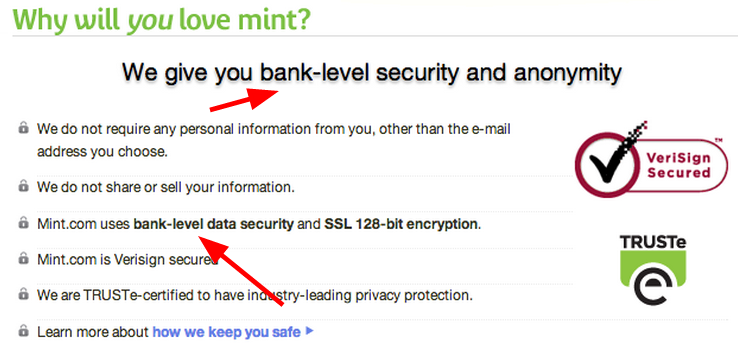
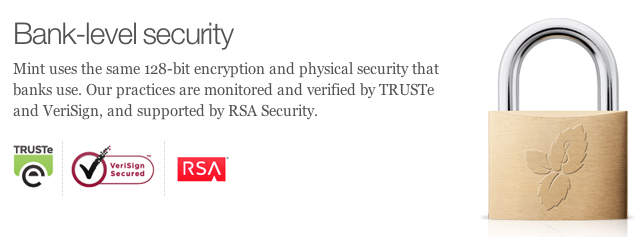
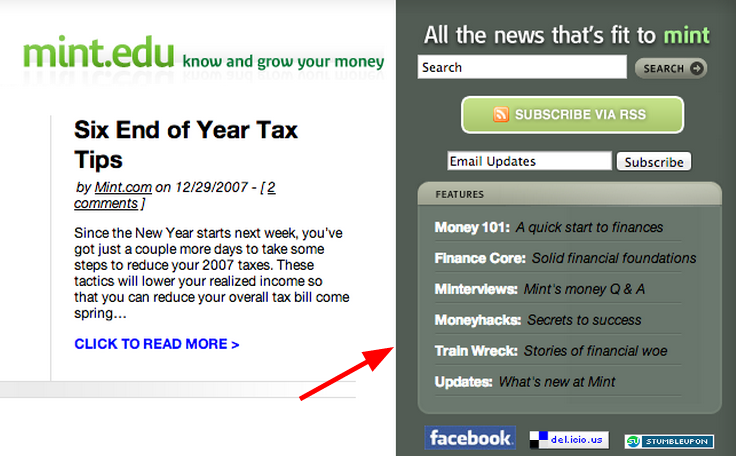
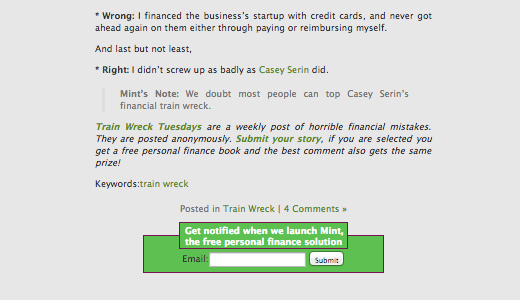







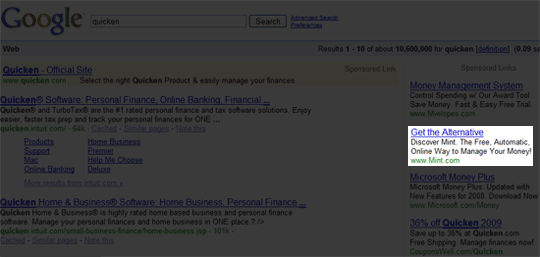

Comments (25)